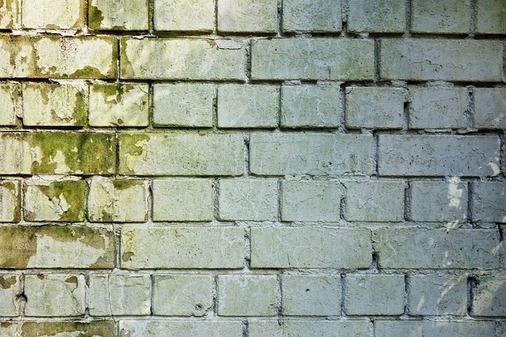
The presence of mold in commercial spaces is more than an aesthetic concern; it’s a potential threat to the health of occupants. Mold can flourish in hidden corners, behind walls, or in damp environments, posing risks ranging from respiratory issues to allergies. Commercial mold remediation is the solution, focusing not only on eliminating visible mold but also on safeguarding the well-being of those who occupy the space. In this detailed exploration, we unravel the critical aspects of commercial mold remediation, shedding light on the proactive measures that protect occupants’ health and ensure a safe environment for work and business.
Commercial spaces, whether offices, warehouses, or retail establishments, are susceptible to mold growth. This article aims to demystify the complexities of mold remediation, providing practical insights into why it’s crucial, how it’s done, and the overarching importance of prioritizing occupants’ health. From understanding the signs of mold to implementing preventive measures, every aspect covered here contributes to creating a safe and healthy commercial environment.
See also our post on Floor Waxing and Polishing: Restoring Shine to Commercial Floors
Recognizing the Signs of Mold
Visible Mold Growth
Identifying visible mold growth is the most apparent sign of a mold issue. This includes patches of discoloration on walls, ceilings, or other surfaces. Prompt recognition helps in addressing the problem before it escalates.
Musty Odors
Musty odors are often a telltale sign of hidden mold. If occupants notice persistent, earthy smells that don’t dissipate with cleaning, it could be an indicator of mold growth behind walls, under flooring, or in other concealed spaces.
Allergic Reactions
Frequent allergic reactions, such as sneezing, coughing, or skin irritation, among occupants may suggest the presence of mold. Monitoring health symptoms and their correlation with time spent in the commercial space is crucial for early detection.
Water Leaks or Damage
Any history of water leaks or water damage in a commercial space increases the risk of mold growth. Even minor leaks, if left unaddressed, can create a conducive environment for mold. Regular inspections for water-related issues are essential.
Poor Indoor Air Quality
Mold spores can impact indoor air quality. If occupants experience respiratory issues, increased allergies, or a general feeling of discomfort when inside the commercial space, it may indicate compromised air quality due to mold.
See also our post on Green Cleaning for Commercial Properties: Eco-Friendly Solutions
Health Risks Associated with Mold
Respiratory Issues
Exposure to mold can trigger or exacerbate respiratory problems. Individuals with asthma, allergies, or other respiratory conditions may experience worsened symptoms in mold-contaminated environments.
Allergic Reactions
Mold is a common allergen, and exposure can lead to allergic reactions such as sneezing, itching, and nasal congestion. Individuals with mold allergies may experience more severe symptoms.
Skin Irritation
Contact with mold or mold-contaminated surfaces can cause skin irritation. Redness, itching, or rash may occur upon direct contact, emphasizing the importance of thorough mold remediation.
Eye Irritation
Mold spores in the air can cause eye irritation, including redness, itching, and watering. Persistent eye discomfort may signal the need for professional mold remediation.
Aggravation of Existing Conditions
For individuals with pre-existing health conditions, such as compromised immune systems, mold exposure can exacerbate their health challenges. Mold remediation is crucial to safeguard the well-being of vulnerable individuals.
The Mold Remediation Process
Inspection and Assessment
A thorough inspection is the first step in mold remediation. Professionals assess the extent of mold growth, identify affected areas, and determine the cause of the problem. This comprehensive evaluation guides the remediation plan.
Containment Measures
Containment is crucial to prevent mold spores from spreading to unaffected areas during remediation. Professionals use barriers, negative air pressure, and other measures to isolate the contaminated space.
Mold Removal
The removal of mold-infested materials is a key aspect of remediation. This includes cleaning or discarding contaminated items, such as drywall, insulation, or carpeting. Thorough removal ensures the elimination of mold at its source.
Cleaning and Disinfection
After mold removal, the affected surfaces are cleaned and disinfected. Specialized cleaning agents are used to eliminate any remaining mold spores and prevent future growth. This step is essential for creating a safe and healthy environment.
Restoration and Repairs
The final stage involves restoring and repairing the affected areas. This may include repairing damaged structures, replacing materials, and ensuring that the commercial space is returned to its pre-mold condition.
See also our post on How to Clean and Maintain Commercial Appliances: Longevity and Efficiency
Preventive Measures for Mold Control
Moisture Management
Controlling moisture is paramount in preventing mold growth. Regularly inspect and address any water leaks, condensation, or humidity issues to create an environment inhospitable to mold.
Adequate Ventilation
Proper ventilation helps maintain optimal indoor air quality. Ensure that commercial spaces are well-ventilated to reduce humidity levels and discourage mold growth.
Regular Inspections
Implement a routine schedule for mold inspections. Regular checks of key areas prone to moisture and mold, such as basements, attics, and HVAC systems, help in early detection and preventive action.
Prompt Repairs
Address any water leaks or damage promptly. Swift repairs prevent the escalation of moisture-related issues that can lead to mold growth.
Educating Occupants
Educate occupants about the signs of mold and the importance of reporting any concerns promptly. Creating awareness fosters a collaborative effort in maintaining a healthy commercial environment.
Hiring Professional Mold Remediation Services
Expertise and Experience
Professional mold remediation services bring expertise and experience to the table. Trained professionals understand the intricacies of mold growth, ensuring thorough inspections and effective remediation.
Specialized Equipment
Mold remediation often requires specialized equipment, such as air scrubbers, dehumidifiers, and protective gear. Professionals are equipped with the tools necessary for safe and efficient mold removal.
Compliance with Regulations
Mold remediation professionals adhere to industry regulations and guidelines. Compliance ensures that remediation efforts are conducted ethically, safely, and in accordance with legal requirements.
Thorough Inspections
Professionals conduct comprehensive inspections to identify hidden mold and assess the full extent of the contamination. Thorough inspections inform a targeted and effective remediation strategy.
Prevention of Cross-Contamination
Professional services implement measures to prevent cross-contamination during remediation. This includes proper containment, air filtration, and disposal procedures to ensure that mold spores do not spread to unaffected areas.
See also our post on Preventive Maintenance for Commercial Cleaning Equipment
Post-Remediation Testing and Verification
Air Quality Testing
Post-remediation air quality testing is conducted to ensure that mold spore levels are within acceptable limits. This step verifies the effectiveness of the remediation efforts and the restoration of healthy indoor air quality.
Surface Sampling
Surface sampling may be performed to confirm the absence of mold on cleaned and remediated surfaces. This meticulous verification process ensures that all traces of mold are eliminated.
Occupant Reassurance
Providing reassurance to occupants is a crucial aspect of post-remediation. Clear communication about the remediation process, testing results, and the steps taken to ensure a mold-free environment fosters confidence among occupants.
Continued Monitoring
Ongoing monitoring is advisable to ensure that the conditions conducive to mold growth are effectively addressed. Regular checks and maintenance contribute to sustained mold control and occupant well-being.
Documentation of Remediation
Maintaining detailed documentation of the remediation process, including inspection reports, testing results, and the steps taken, is essential for future reference. Documentation ensures accountability and transparency.
Educating Occupants on Mold Awareness
Recognizing Early Signs
Educate occupants on recognizing the early signs of mold growth, including visible patches, musty odors, and health symptoms. Prompt reporting enables swift remediation.
Reporting Procedures
Establish clear reporting procedures for occupants to notify management about any concerns related to mold. Encourage an open communication channel to address issues promptly.
Occupant Responsibilities
Communicate the responsibilities of occupants in maintaining a mold-free environment. Simple practices, such as promptly reporting leaks or spills, contribute to a collective effort in mold prevention.
Importance of Timely Reporting
Highlight the importance of timely reporting in preventing the escalation of mold issues. Early intervention can significantly reduce the scope and cost of remediation.
Building a Culture of Awareness
Foster a culture of mold awareness among occupants. Regular communication, educational materials, and workshops contribute to a proactive approach in maintaining a healthy commercial space.
Conclusion
Commercial mold remediation is not just about removing visible mold; it’s a comprehensive process aimed at safeguarding the health of occupants. From recognizing the signs of mold to implementing preventive measures, hiring professionals, and educating occupants, every step plays a vital role in creating a mold-free and healthy commercial environment. The impact extends beyond the physical removal of mold; it encompasses the well-being and confidence of everyone who steps into the commercial space. By prioritizing mold remediation as a holistic approach to health protection, businesses ensure a safe and thriving environment for occupants and contribute to the longevity and success of their commercial endeavors.


